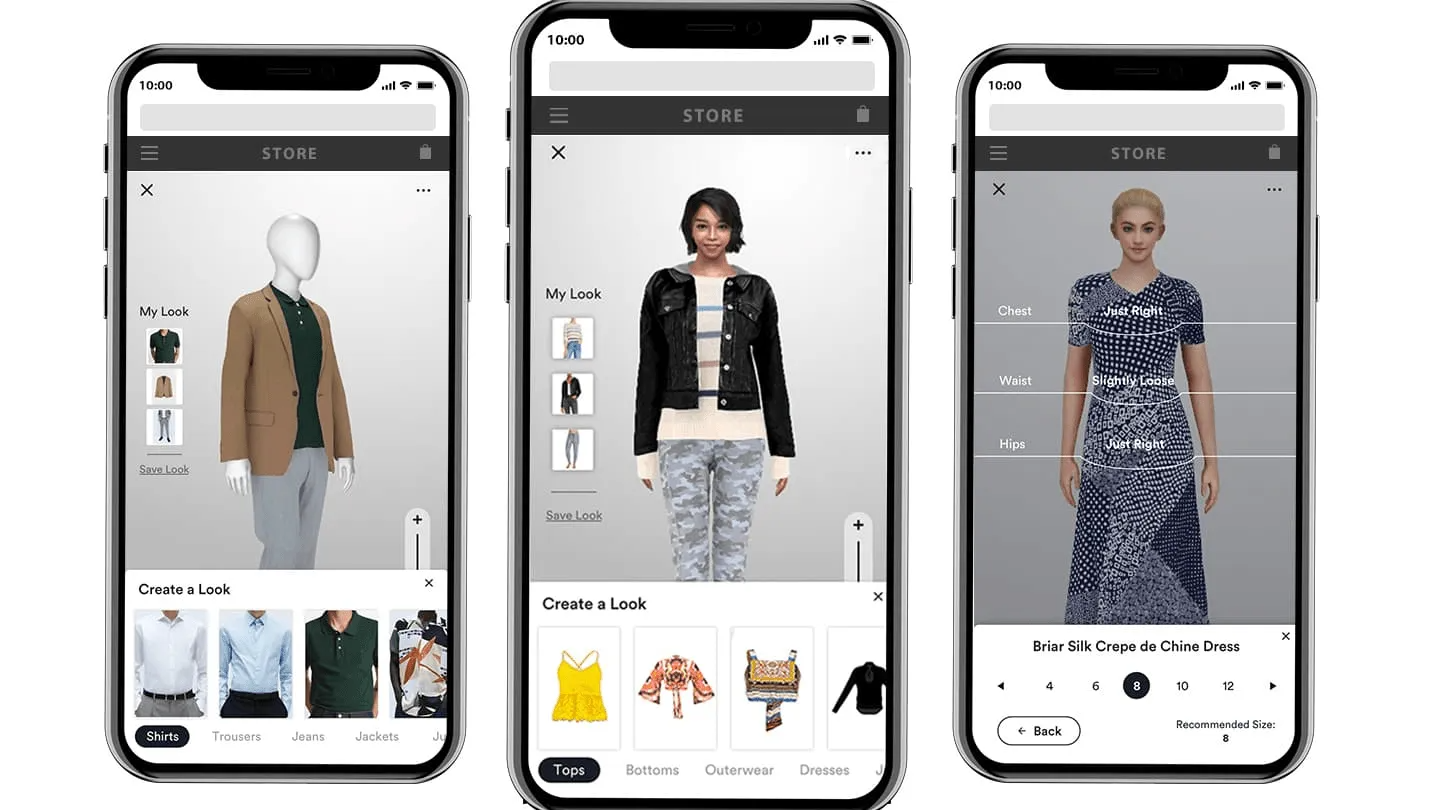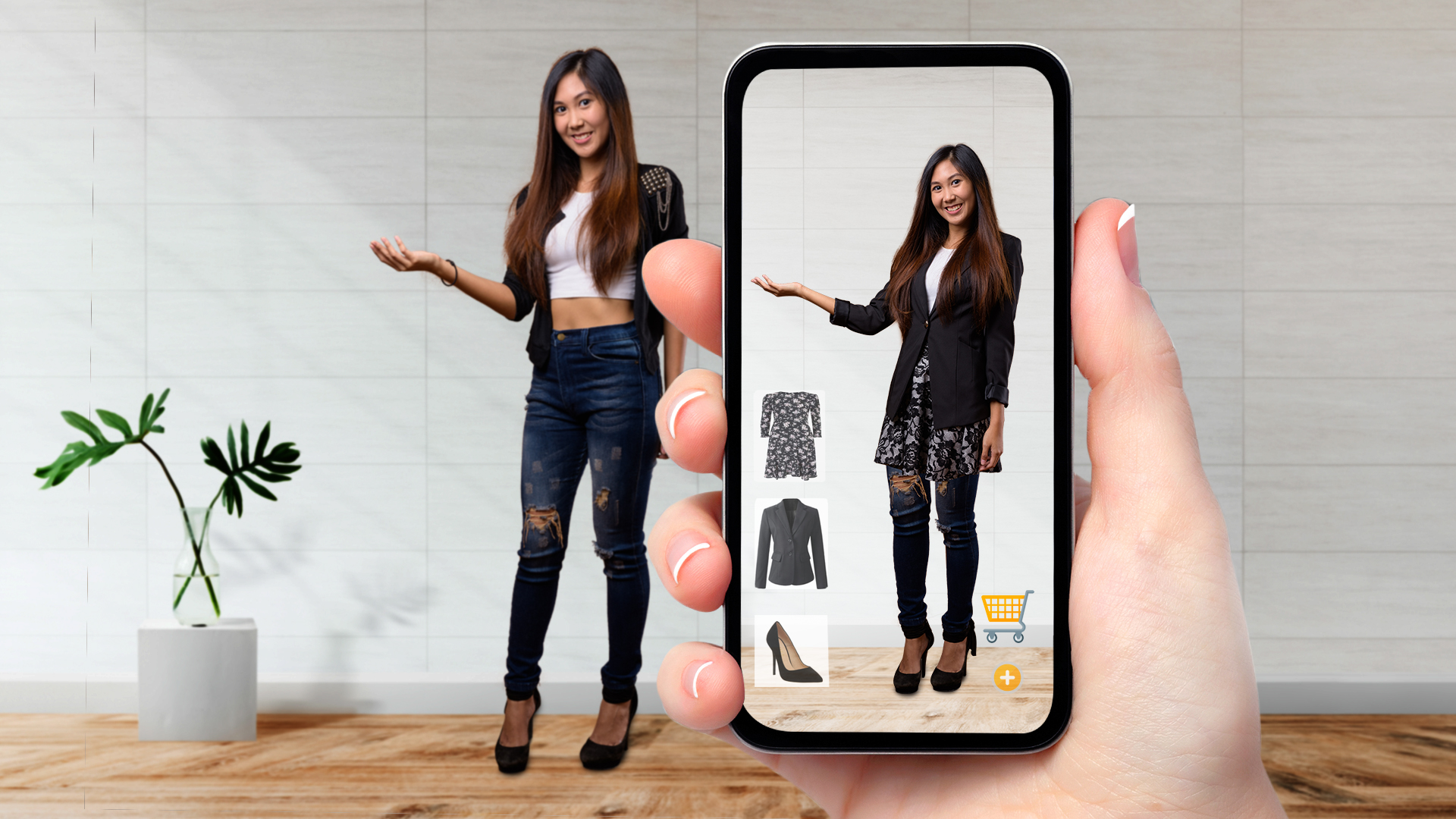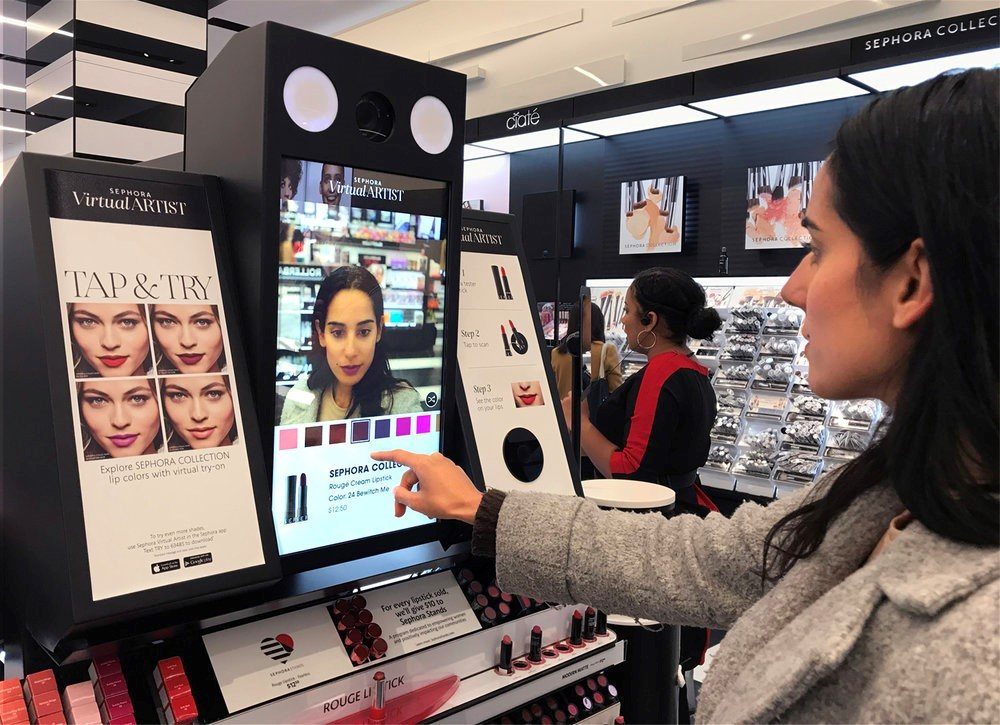.webp?2025-12-10T09:37:36.033Z)
Try 12 gamified ideas to bring the cheer back!

Next-Gen UX: Integrating Augmented Reality in Shopping Apps
Mark Polskii
Author @ InAppStory
Augmented Reality goes beyond traditional online shopping by allowing users to visualize products in their own environment, try on clothing virtually, or see how a new makeup shade would look on their skin—all before making a purchase. This integration of AR into shopping apps not only addresses common customer pain points, such as uncertainty about product fit and appearance but also adds an element of excitement and innovation to the shopping process.
The rise of AR in shopping apps is backed by advancements in mobile technology and increased consumer interest in more engaging and personalized shopping experiences. As smartphones become more capable of supporting high-quality AR, retailers are given new avenues to captivate and engage customers, offering them a glimpse into the future of retail.
Current State of AR in Shopping Apps

Augmented Reality (AR) is increasingly becoming a cornerstone of innovation in the retail sector, particularly within shopping apps. As technology has advanced, so too has the adoption of AR by major retailers and startups alike, looking to provide an unparalleled shopping experience. This section outlines the current landscape of AR technology in shopping apps, illustrating its widespread use and consumer reception.
Adoption by Major Retailers
- Fashion and Beauty: Many leading fashion retailers have incorporated AR to allow customers to try on clothes virtually. Beauty brands have similarly adopted AR for virtual makeup trials, enabling users to see how products look on their own faces before purchasing.
- Furniture and Home Decor: Companies in the home decor space use AR to help customers visualize how furniture and decor items will fit and look in their actual living spaces. This use of AR helps in reducing the hesitation associated with online purchases of large items.
Technological Integration
- Mobile Compatibility: The proliferation of smartphones with high-performance cameras and processors has made AR more accessible. Most modern smartphones are now capable of supporting sophisticated AR applications, which has facilitated broader adoption of AR shopping features.
- Software Development: There has been significant development in AR software platforms by major tech companies, such as Apple's ARKit and Google's ARCore, which allow developers to create more advanced AR experiences with greater ease.
Consumer Reception and Usage
- User Engagement: Data shows that AR features in shopping apps lead to higher engagement rates. Users who interact with AR features are more likely to spend longer periods within the app, reflecting a deeper level of engagement with the product and brand.
- Impact on Sales: Retailers that have implemented AR report increases in conversion rates and a decrease in return rates. The ability to virtually try or test products before buying helps reduce the uncertainty that typically accompanies online shopping.
Innovative Examples and Market Leaders
- IKEA Place and Wayfair: These home improvement apps allow users to visualize furniture in their homes, adjusting for space and style compatibility.
- Sephora Virtual Artist and L'Oréal's AR Makeup Try-On: These beauty apps offer customers the ability to test various cosmetics on their skin virtually, using real-time facial mapping.
Challenges and Limitations
- Despite its growing popularity, the integration of AR into shopping apps is not without challenges. Issues such as the accuracy of AR visualization, the variability in lighting conditions, and the need for high graphical fidelity are ongoing areas of development.
- There are also broader concerns about privacy and data security, as AR apps often require access to cameras and location data.
Benefits of AR Integration

Integrating Augmented Reality (AR) into shopping apps brings a myriad of benefits that enhance both the user experience and the retailer's business performance. By overlaying digital information onto the real world, AR helps bridge the gap between online and physical shopping, offering a unique, engaging, and informative experience. Here are the key benefits of AR integration in shopping apps:
Enhanced User Engagement
- Interactive Experiences: AR makes shopping interactive, allowing users to engage with products in a dynamic way. For example, users can see how furniture fits in their space or how clothes look on them without physically trying them out.
- Increased Time Spent in App: By providing an immersive and fun experience, AR can keep users engaged longer, increasing the chances of making a purchase.
Improved Customer Decision-Making
- Try Before You Buy: AR allows consumers to visualize products in a real-life context, reducing uncertainty and leading to more confident purchase decisions. This is particularly beneficial for categories such as furniture, home decor, and fashion.
- Instant Access to Information: AR can display detailed product specifications, reviews, and other helpful information just by pointing a device at an item, simplifying the decision-making process.
Personalization of Shopping Experiences
- Custom Recommendations: AR can analyze the user's environment and preferences to suggest personalized product recommendations. This tailored approach not only improves user satisfaction but also boosts sales potential.
- Engagement Based on User Behavior: Advanced AR systems can adapt based on the user’s past interactions, offering a highly personalized shopping journey that evolves over time.
Increased Conversion Rates
- Reduced Cart Abandonment: By providing more certainty about how well products fit into the user's life, AR can decrease the likelihood of cart abandonment.
- Upselling Opportunities: Retailers can use AR to suggest additional items that complement the user’s current selections, effectively increasing the average order value.
Brand Differentiation and Innovation
- Market Leadership: Employing AR can set a brand apart, showcasing it as a forward-thinking leader in technological adoption.
- Enhanced Brand Perception: Brands that utilize AR are often perceived as innovative and customer-centric, which can enhance customer loyalty and attract new users.
Cost Savings and Efficiency
- Reduced Return Rates: As customers make more informed purchases, the rate of returns decreases, saving costs associated with logistics and restocking.
- Streamlined Inventory Management: AR can also help retailers manage inventory more effectively by using virtual showrooms, thus reducing the need for physical space.
Design Principles for AR in Shopping Apps
Incorporating Augmented Reality (AR) into shopping apps offers a way to revolutionize user experiences by combining the digital and physical worlds in a seamless interface. However, the success of AR integration heavily depends on adhering to clear design principles that prioritize ease of use, effectiveness, and an uncluttered user interface. Here are some key design principles to follow:
Simplicity and Intuitiveness
- User-Friendly Interface: Ensure that the AR features are easy to access and use. Overly complicated interfaces can deter users from engaging with the technology.
- Minimal Learning Curve: Design the app so that new users can quickly understand how to interact with AR features without extensive tutorials or assistance.
Contextual Relevance
- Targeted AR Experiences: Develop AR features that are relevant to the user’s shopping goals. For instance, an AR tool in a furniture app should allow users to visualize how a piece of furniture would look in their own living space.
- Enhanced Interaction: Use AR to provide additional information about products when it is most useful, such as showing how items can be combined or offering real-time product customization options.
Performance and Reliability
- Fast Load Times: Ensure that AR features do not slow down the app; optimize AR content to load quickly to keep users engaged.
- High-Quality Visuals: Use high-resolution imagery and accurate 3D models to enhance the realism of AR features, making the virtual interaction as believable as possible.
Accessibility
- Broad Device Compatibility: Make AR features available across a wide range of devices, including older smartphone models, to reach a larger audience.
- Adaptive Designs: Include accessibility options such as voice commands or screen readers to make AR features usable for people with disabilities.
Privacy and Security
- Data Protection: Clearly communicate how user data is collected, used, and protected, especially when AR apps require access to cameras and location data.
- Secure AR Sessions: Implement robust security measures to protect users from potential AR-related vulnerabilities, such as unauthorized data access or manipulation.
Case Studies

To demonstrate the impactful integration of Augmented Reality (AR) in shopping apps, this section explores several real-life examples from different sectors of the retail industry. These case studies highlight the effectiveness of AR technology in enhancing user experiences, improving sales, and innovating traditional shopping practices.
IKEA Place: Revolutionizing Furniture Shopping
- Overview: IKEA Place allows users to visualize how furniture would fit and look in their own space using AR technology.
- Implementation: The app uses ARKit, Apple’s AR development platform, to place true-to-scale 3D models of furniture in users' homes via their device's camera.
- Results: IKEA reported that the app significantly increased customer satisfaction and confidence in purchase decisions, leading to lower return rates and higher sales. The app also garnered extensive media coverage, reinforcing IKEA's reputation as an innovator.
Sephora Virtual Artist: Transforming Beauty Retail
- Overview: Sephora’s Virtual Artist app enables customers to try on makeup virtually using facial recognition technology.
- Implementation: The app uses ModiFace technology to apply makeup to users' live video feeds, allowing them to see how products look on their actual faces under various lighting conditions.
- Results: Sephora observed an increase in customer engagement and product trial, leading to higher conversion rates. The app has also helped Sephora gather valuable data on consumer preferences, which has been used to tailor marketing and stock inventory more effectively.
Nike Fit: Customizing Shoe Fitting
- Overview: Nike introduced Nike Fit to its mobile app to help customers find the correct shoe size using AR.
- Implementation: The tool scans the user's feet using the smartphone camera to recommend the best shoe size for each Nike model.
- Results: Nike Fit addressed a common customer pain point—returning shoes due to incorrect sizing. This feature reduced returns, improved customer satisfaction, and increased repeat purchases by ensuring a perfect fit the first time.
Wayfair - Visualize Before You Buy
- Overview: Wayfair offers an AR feature that lets customers see furniture and decor in their homes before buying.
- Implementation: Users can view 3D models of products in their home at scale by using their smartphone cameras, which helps them determine if the size, style, and color match their space.
- Results: Wayfair reported increased user engagement and a decrease in return rates. The AR feature has also been crucial in attracting new customers who prefer a more interactive shopping experience.
Warby Parker: Virtual Try-On
- Overview: Warby Parker’s app allows customers to try on eyeglasses virtually using AR.
- Implementation: The app uses the iPhone’s front-facing camera and face-mapping technology with AR to superimpose eyeglasses onto the user’s face realistically.
- Results: This feature has enhanced online shopping convenience, leading to higher sales and customer retention. Customers can now experiment with different styles quickly, increasing the likelihood of finding a pair they are satisfied with without visiting a store.
Conclusion
The integration of Augmented Reality (AR) into shopping apps marks a significant leap forward in the evolution of digital commerce. As we've explored throughout this article, AR offers a dynamic and innovative way to bridge the gap between virtual and physical shopping experiences. By allowing users to visualize products in real-world contexts, try on items virtually, and access detailed product information instantaneously, AR enhances user engagement, improves decision-making, and increases sales conversions.

